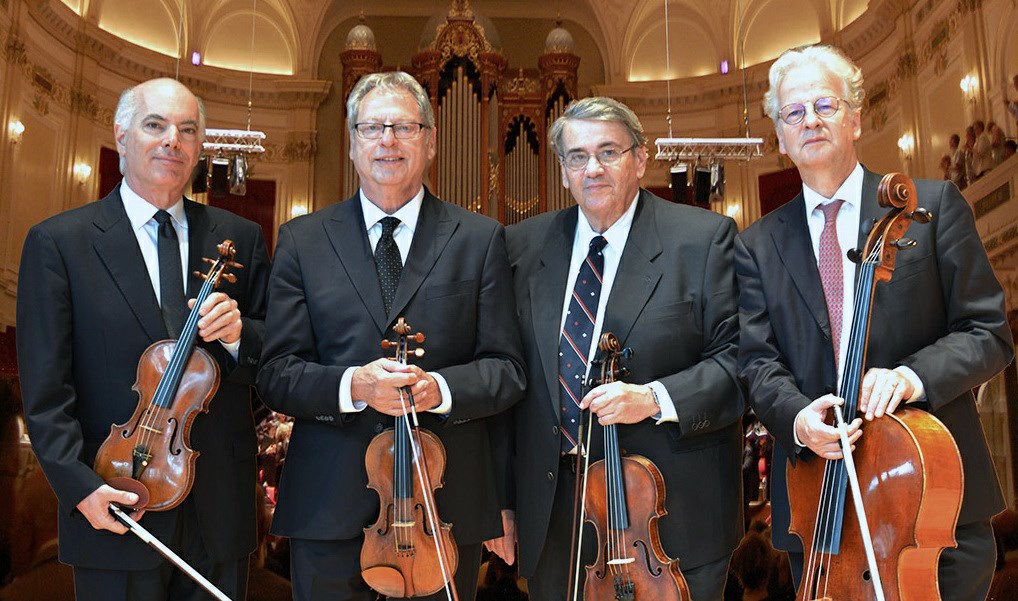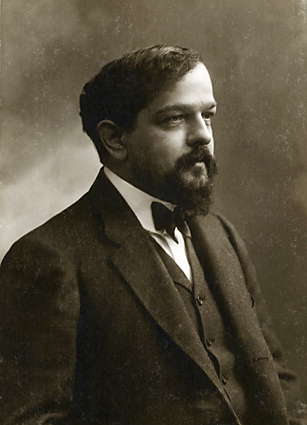Fine Arts Quartet Contrasts Greig and Debussy
Concert features two substantially contrasting works written in the late 19th century.
The Fine Arts Quartet returns to the University of Wisconsin-Milwaukee Zelazo Center this Sunday evening at the end of a week-long Summer Festival. Having ended their 55-year residency at the University in January, the June series is community-sponsored – the result of fund-raising by the Friends of the Fine Arts Quartet in partnership with Saint John’s On The Lake and the UW-Milwaukee Peck School of the Arts.
The Quartet now includes two members who had frequently been guests of the Fine Arts Quartet when a quintet or sextet was required. The current membership – violinists Ralph Evans and Efim Boico, violist Gil Sharon and cellist Niklas Schmidt. Sharon is founder and Artistic Director of the Amati Ensemble in Maastricht, Holland. Schmidt teaches at Hochschule für Musik und Theater in Hamburg, Germany and was for many years a member of the distinguished Trio Fontenay. Among other visits, Sharon and Schmidt shared the stage with the Fine Arts Quartet in a Milwaukee concert in 2013. The four have begun a schedule of concerts in Europe and the United States, booked well into 2019.
Edvard Grieg‘s String Quartet in G minor (1877-78) is a well integrated work that gains its strength from motivic elements rather than melodies. The work opens with a line from a song Grieg wrote – The Minstrel’s Song. The rhythmic elements, however, are what matter. The single melodic line appears with variations throughout the work. Occasionally, it is tranquil – but more often the sounds are more harsh or the basis for dance.
An Andantino second movement serves up the melodic line as a lush Romanze. Contrasting sections introduce an agitated motif. The contrasting fast sections tend to make the romantic melody all the more lush. The third movement Intermezzo takes its scherzo from the rhythms of a Norwegian country dance. A lively satarello – a sixteenth century Italian jumping dance dominates the finale.
Claude Debussy wrote his break-through, impressionistic String Quartet in G minor, op. 10 in 1893. This was an important element in his revolutionary approach to music that was to inspire many 20th Century composers.
A germinal motif introduced in the first movement appears as a thread throughout the quartet. A delightful scherzo features a viola variation of the motif surrounded by pizzicato accompaniment. Melodic themes build dramatically in the third movement. The quartet concludes with rhythmic echoes of the opening motif.
Debussy’s string quartet breaks substantially with past formal structures. Critic Keith Anderson observes that “Debussy never bothered with formal development, bold ideas just rise out so naturally against the background when their time comes.” In this case, the parts may be as important as the sum. Debussy seeks a balance between the pentatonic theme woven into every movement and the changing colors and textures in between.
Neither Grieg nor Debussy are known for their chamber music. They each wrote one string quartet. But each has become a part of the favorite repertoire for string quartets.
The June 17, Sunday evening concert starts at 7:30 p.m. at the Zelazo Center at 2419 E. Kenwood Blvd. Former bassoonist with the Milwaukee Symphony Orchestra, Steve Basson will offer a pre-talk starting at 6:30 p.m.
In a break from past procedures, the concert is free and without assigned seating – no ticketing. Patrons merely need to show up at the Zelazo Center. The concert hall will open at about 7:10 p.m.
The Fine Arts Quartet will offer their fourth concert of the Festival at the Jewish Museum of Milwaukee on Monday, June 14 at 6:00 p.m. Reservations are full for that concert.
More information, including notes and online listening recommendations may be found at FOFAQ.org
Preview
-
A Sacred Choir, 70 Voices Strong
 Dec 14th, 2025 by Martha Brown
Dec 14th, 2025 by Martha Brown
-
Prometheus Trio Goes Bohemian
 Dec 3rd, 2025 by Martha Brown
Dec 3rd, 2025 by Martha Brown
-
Present Music Offers New Choral Works
 Nov 20th, 2025 by Michael Barndt
Nov 20th, 2025 by Michael Barndt






















